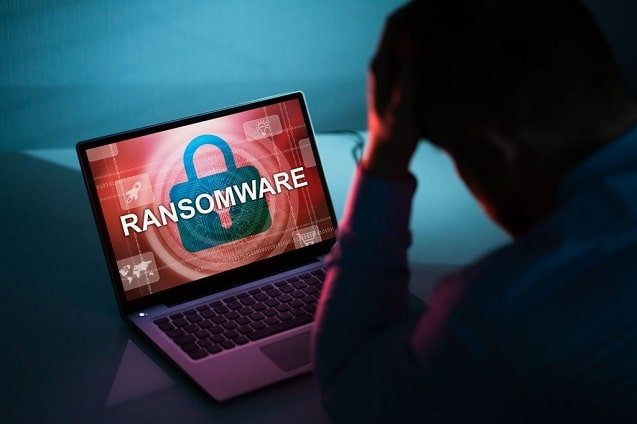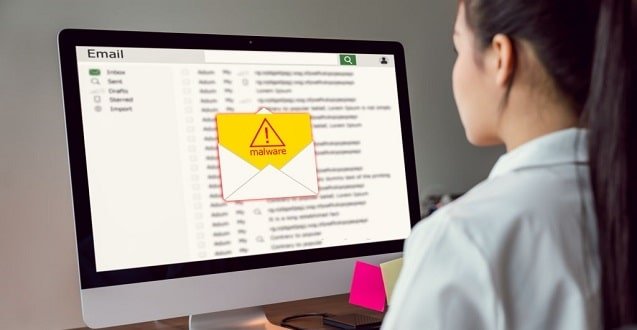Last updated on January 1, 2025
Ransomware attacks were increasing and became dangerous lately. A major attack in a corporate network could cost companies hundreds of thousands of dollars. As of 2025, the United States could see 5,000 ransomware attacks worldwide.
The total reported ransomware cases for 2019 was 53% higher than last year according to the Threat Landscape report. In recent years the ransom has reached an unprecedented low. The latest attempted ransom attempt has gone as fast as $50 million. Recent Attacks against the Governments cost the government around $35 million.
Always be cautious when online, don’t surf the web on public Wi-Fi networks.
What is Ransomware And How it Works?
Ransomware is a division of malware in which the data on a victim’s computer is locked and hacked by encryption and payment is demanded before the ransomed data is decrypted and access or returned to the victim.
It’s obvious likely the intention for ransomware attacks is monetary, and unlike other types of these attacks, the victim is notified and given instructions for how to recover from the attack.
Effectively Payment is often demanded in a virtual currency (VC), like bitcoin, and the smart reason behind it is that the cybercriminal’s identity is not known and they get the money without recognition.
How To Detect You Are Infected By Ransomware?
Check file extensions you add in your computer system or App
Your operating system may hide file extensions by default. The first thing to do Show them, and look at your files. If common file extensions like “.docx” “pdf” or “.png” have changed to random letter arrangements, this indicates a ransomware infection.

Ransomware attackers work by gaining access to your computer, locking and encrypting the data stored on it. Surprise? How does this happen? It often happens when victims mistakenly download malware through email attachments or links from unknown sources and it contains any virus.
There are some easy ways to detect ransomware:
Renamed files: if you find files with a different name from the original name, this can specify ransomware has encrypted the data.
Sensitive CPU/disk activity – ransomware can cause increased use of system resources. Shut down normal applications and processes and see if the operation is higher than normal.
Irregular network interference: Many types of ransomware interact with a C and C server, and you can detect this unusual network traffic using tools like Wireshark.
Encrypted files: and then finally, if you attempt to open a file and disclose that it is encrypted, this is a clear and cut sign of ransomware.
How To Protect Against Ransomware?
There are steps you can take to protect your computer or devices against being gain access to the ransomware.
Here are variety of the ideas to prevent.
Always back up your data. It’s helpful if you’ve made an external backup of your files, then you continue to have access to your data if cybercriminals plan to steal it hostage.
Install trustworthy ransomware protection software.
Always stay updated and Keep your operating system, programs, and security software up to date. This can protect you against the latest malware with the latest security spots.
Say NO to email attachments
It’s a big No to click on email attachments or links from unknown sources. They could have malware embedded in them.

Be cautious
Always be cautious when online don’t surf the web on public Wi-Fi networks.
Use VPN
Using a virtual private network(VPN) can help keep your data private. Never use USB sticks from unknown sources. You don’t want to deliver an easy gateway for hackers.
Can Ransomware Be Removed?
Ransomware may be a profitable pursuit for cybercriminals and may be difficult to prevent. Prevention is that the most vital aspect of protecting your personal data. If you would like to understand the way to remove ransomware from your Windows PC or other devices, we’ve got excellent news and bad news both. The good news is it’s not that simple, but it’s possible.
The bad news is it’s not possible and easy. Ransomware programs are making a reproduction of encrypted files on removable media just in case a solution becomes available within the long term or a failed decryption effort damages the files.
Check for Decrypts: Check with the No More Ransom Project to see if free decrypts are available or not. If available, run it on a replica of the encrypted data to ascertain if it can restore the files or not.
Shout out For Help: Computers sometimes store backup copies of files. A digital forensics expert could also be ready to recover these copies if they need and have not been deleted by the malware.
Wipe and Restore: Restore the machine from a clean backup or OS installation. This ensures that the malware is totally far away from the device.
Use Ransomware Decryption Tools:
What now if your computer is infected with ransomware that encrypts your data. There are many tools for defeat ransomware and its works. So what you can do is you will need an appropriate decryption tool to regain access. We are constantly exploring the latest types of ransomware so that we can provide the suitable yet best decryption tools to counter these attacks.
Ransomware Removal / Decrypt Tools:
There are some of the ransomware decryption tools mentioned below are easy to use, while others require a bit more technical knowledge to interpret. If you don’t have technical skills, you can always ask for help on one of these malware removal forums, which feature many more information and communities ready to help.
THE BEST RANSOMWARE PROTECTION TOOLS
There are some Ransomware protection tools below to go to the provider’s website:
-
Bitdefender Antivirus Plus:
No 1 ranked antivirus during a world full of virus protection providers and doesn’t even cost more than free antivirus downloads. One at any rankings of big autonomous antivirus, and you’ll see that Bitdefender’s premium security products always rise to the top.
-
AVG Antivirus:
As a ransomware shield and anti-malware app, though, AVG is very good. AVS dashboard is user-friendly, there’s protection not just from only downloadable threats, and you can use your mobile to scan your PC remotely, which is pretty clever.
Although the free version offers basic antivirus protection, you actually need to upgrade to the paid version to urge full-featured protection against ransomware.
-
Avast Antivirus:
Avast Antivirus better is that ransomware protection is included in the free version of the Avast Antivirus program. So, you don’t even need to pay to upgrade, additional security features are also widely available. Paid versions are also available for business users for internet security options to cover a range of needs and options.
-
Webroot Antivirus:
It’s not easy to match Webroot’s precision with the competition within the market of antivirus programs. The reason behind that is because the big testing labs rarely estimate the company’s products. However, when they are reviewed, they commonly score high, and our own tests show solid and consistent protection.
Just about every antivirus tool claims its features also include always-on security, identity protection, real-time anti-phishing, firewall monitor.
-
ESET NOD32 Antivirus:
If you judge antivirus software on its feature list, ESET NOD32 Antivirus might be a bit of discontent because of its no firewall, password manager protection, file shredder, vulnerability scanner, or any of the bundled bonuses you’ll. This doesn’t mean the suite is short on power in it, however. It’s just more focused on the basics otherwise its also gives you protection with its basic tools.
